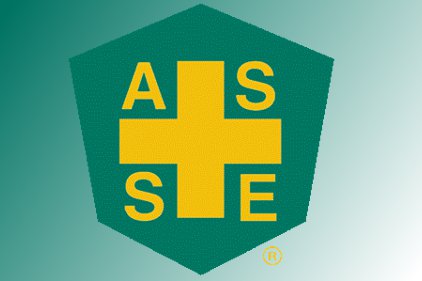ASSE’s Professional Safety Journal:
A new view of the great safety pyramid

 Since its creation 83 years ago by H. W. Heinrich, the safety triangle offered a ratio formula that encouraged safety professionals to focus on the causes of minor injuries as a way to reduce the probability of having major accidents. It sparked a new way of interpreting safety data that may be flawed.
Since its creation 83 years ago by H. W. Heinrich, the safety triangle offered a ratio formula that encouraged safety professionals to focus on the causes of minor injuries as a way to reduce the probability of having major accidents. It sparked a new way of interpreting safety data that may be flawed.
Dave Rebbitt, author of the cover story “Pyramid Power” in the September issue of the American Society of Safety Engineer’s monthly journal Professional Safety, makes the argument that the safety pyramid’s assumptions are off base. Managing minor incidents only improves these types of incidents. It does not affect the major incident rate.
“Attempts to apply a ratio or pyramid on a wide scale are not doomed because the concept is wrong, but because of the wide variation among industries and within individual companies,” Rebbitt writes.
Numbers are "questionable"
In 1931, Heinrich’s safety pyramid was built around the ratio of 300-29-1: one serious injury was related to 29 minor injuries and 300 non-injury related events. Heinrich claimed 88 percent of incidents were caused by the unsafe acts of people, 10 percent were caused by unsafe conditions and 2 percent were unpreventable.
“Today, many believe that Heinrich’s work was important, but superficial, and the numbers in the triangle questionable at best,” Rebbitt writes.
Figures published by pioneers
Heinrich’s real contribution isn’t in the ratio formula but in advocating for the use of data to find common causes as a function of injury investigations. “Using ratios can identify trends and give early warning that something is outside the normal expected parameters,” Rebbitt writes. “We should not dismiss these concepts or assumptions but understand what they mean to the profession today. The figures published by pioneers were meaningful to them, but forward-thinking professionals must make their own to keep things relevant and effective.”
Read this article at: https://www.asse.org/professionalsafety/pastissues/059/09/F1Reb_0914Z.pdf
For more than 50 years, ASSE’s Professional Safety journal has been sharing the latest technical knowledge in SH&E—information that is constantly being developed through research and on-the-job experience. Each issue delivers practical guidance, techniques and solutions to help SH&E professionals identify hazards, protect people, prevent injuries, improve work environments and educate management that investing in safety is a sound business strategy. For more information please visithttp://www.asse.org/professionalsafety.
Founded in 1911, the Des Plaines-based ASSE is the oldest professional safety organization and is committed to protecting people, property and the environment. Its more than 36,000 occupational safety, health and environmental professional members lead, manage, supervise, research and consult on safety, health, transportation and environmental issues in all industries, government, labor, health care and education. For more information please go to www.asse.org.
Looking for a reprint of this article?
From high-res PDFs to custom plaques, order your copy today!







